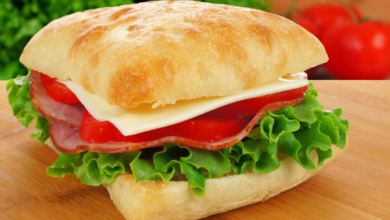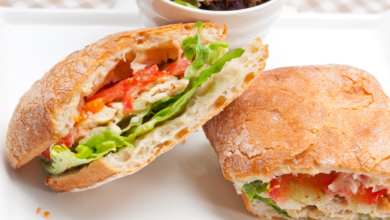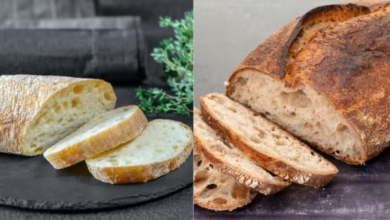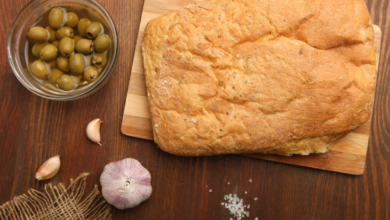Why Does Ciabatta Have Holes In It? A Simple Explanation

What To Know
- In addition to the primary factors discussed above, other factors can also influence the size and shape of the holes in ciabatta bread, such as.
- The holes in ciabatta bread are a testament to the harmonious interplay of science and culinary artistry.
- Whether enjoyed as a sandwich base, a side dish, or simply savored on its own, ciabatta bread’s unique holey structure adds a touch of delight to every bite.
Ciabatta bread, renowned for its airy texture and large, irregular holes, has captivated food enthusiasts worldwide. Its distinctive appearance raises an intriguing question: why does ciabatta bread have holes? Embark on a culinary journey as we delve into the scientific and culinary secrets behind this beloved bread.
The Role of Yeast
Yeast is the driving force behind the holes in ciabatta bread. When added to the dough, yeast consumes the sugar and produces carbon dioxide gas as a byproduct. This gas creates bubbles that expand and stretch the dough, resulting in the formation of holes.
High Hydration
Ciabatta dough is characterized by its high hydration level, meaning it contains a significant amount of water. This water creates a loose and extensible dough, allowing the gas bubbles to expand more easily and form larger holes.
Autolysis
Autolysis, a process in which the dough rests before adding yeast, plays a crucial role in ciabatta’s holey structure. During autolysis, enzymes in the flour break down the proteins and starches, creating a weaker gluten network. This weaker gluten structure allows the dough to stretch more easily, accommodating the expanding gas bubbles.
Stretching and Folding
The repeated stretching and folding of the dough during the kneading process further weakens the gluten structure and encourages the formation of thin, extensible membranes. These membranes enclose the gas bubbles, creating the characteristic holes in ciabatta bread.
Baking Temperature
The high baking temperature used for ciabatta bread (around 450-500°F) causes the gas bubbles to expand rapidly and burst, creating the large, irregular holes. The steam generated during baking also contributes to the expansion of the bubbles.
Other Factors
In addition to the primary factors discussed above, other factors can also influence the size and shape of the holes in ciabatta bread, such as:
- Flour: The type of flour used can affect the strength of the gluten network, impacting the size of the holes.
- Kneading time: Over-kneading can strengthen the gluten network, resulting in smaller holes.
- Proofing: The length of the proofing time can influence the size of the holes, with longer proofing times allowing for larger holes.
Recommendations: The Symphony of Science and Culinary Art
The holes in ciabatta bread are a testament to the harmonious interplay of science and culinary artistry. By understanding the key factors involved, from yeast activity to baking temperature, bakers can craft ciabatta bread with the perfect balance of texture and flavor. Whether enjoyed as a sandwich base, a side dish, or simply savored on its own, ciabatta bread’s unique holey structure adds a touch of delight to every bite.
Frequently Asked Questions
Q: Why are the holes in my ciabatta bread small?
A: Small holes can indicate over-kneading, insufficient hydration, or a lack of autolysis.
Q: How can I create larger holes in my ciabatta bread?
A: Ensure high hydration, allow for adequate autolysis, and avoid over-kneading.
Q: What is the ideal baking temperature for ciabatta bread?
A: Around 450-500°F, as this temperature promotes rapid expansion of the gas bubbles.
Q: How does the type of flour affect the holes in ciabatta bread?
A: Bread flour with a higher protein content creates a stronger gluten network, resulting in smaller holes.
Q: Can I use a bread machine to make ciabatta bread with holes?
A: It is possible, but the holes may not be as large as those produced by hand-kneading and shaping.





